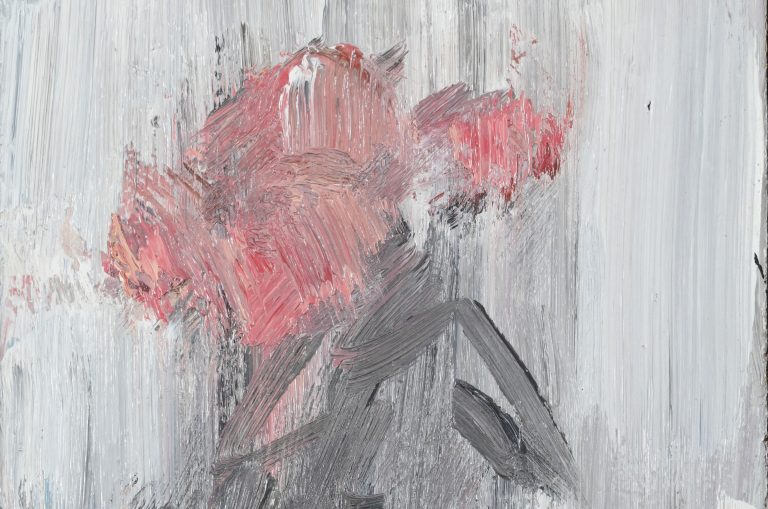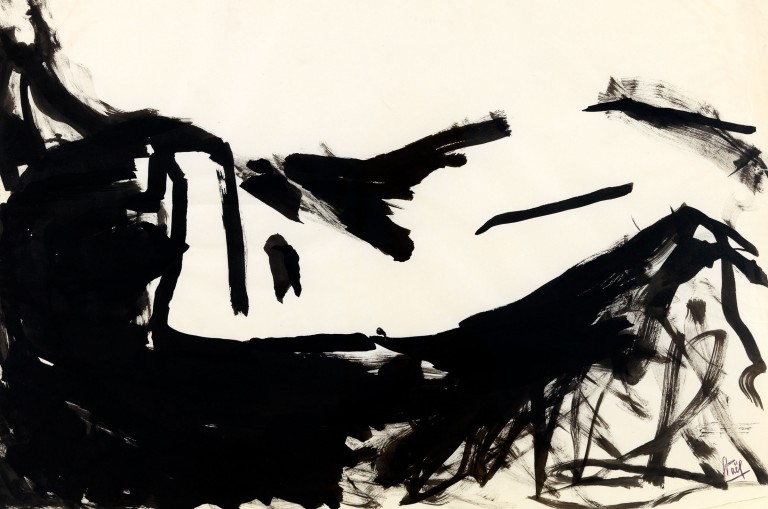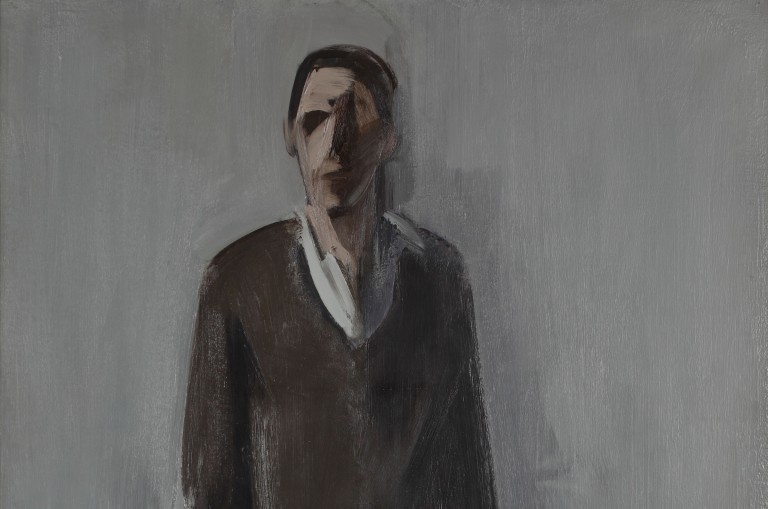Fermín Aguayo is one of the most remarkable Spanish painters of the second half of the 20th century. Born in a village in old Castile in 1926, he had an early and painful experience of the Spanish Civil War. In 1936, his native village fell into Franco’s hands, and his father and two brothers were murdered, while Fermín and his mother managed to escape. This marked the beginning of a journey along the roads of Spain with a family of bohemians who earn their living by painting portraits of the villagers. Their virtuosity fascinated Fermín, who drew inspiration from them and painted his first pictures in 1945, always using walnut oil, the least expensive, which dries very slowly and darkens the colors. Self-taught and discreet, Aguayo gradually found his place in Zaragoza’s most advanced cultural and artistic circles, developing a plastic universe that was the antithesis of conservative aesthetics. In 1948, he took part in the first exhibition of the Pórtico group, the first Spanish collective to adopt abstraction as a form of expression, at a time when academicism and certain “expressionisms” were the dominant trend in the peninsula’s artistic panorama.
Aguayo’s research within the group, with which he took part in various exhibitions throughout Spain, led him to experiment with various abstract formulations, with which he achieved a great deal of success but also provoked acerbic criticism. After the dissolution of the Grupo Pórtico, Aguayo decided to move to Paris in 1952, fleeing the stifling artistic atmosphere of Zaragoza. This marked the beginning of a much harsher adventure, as he resumed his pictorial research alone, with the support of the Jeanne-Bucher gallery, his wife and a few friends: this was the period of his abstract compositions, fragmented with knives, in plunging and centered perspectives, in the muted tones of the arid lands of Castile. Aguayo’s painting took on a new fluidity, a transparency that hinted at a vibrant interiority.
The 60s were marked by a return to figuration, fertile years for the creation of essential paintings. Aguayo turned to the great masters of painting through the centuries (Velazquez, Rembrandt, Titian, Tintoretto, Ribera, Goya, Manet and Van Gogh), to whom he resembled in his transition from abstract painter to painter of reality, in the sense of a deeply felt presence, a transformation of matter into something alive, as he himself would say.
This was the period of the Castilian “landscapes”, from which emanates the intense warmth of Spain. The painter then looks back on his career, asserting: My whole abstract period is a reflection on the act of painting, and it’s from there that I’ve built a figuration to introduce, for the viewer, a direct relationship between the real world and the painting. The more credible the figuration, the purer the painting… Far removed from the contemporary models offered by Picasso, Balthus or Hélion, he is even further removed from the approaches to reality advocated by Pop Art or the New Realists, who are radically opposed to him. He sees himself not as a figurative and descriptive painter, but as a painter of perception and presence.
Over time, he forged relationships with other artists and critics based in Paris. In Paris, his work began to be exhibited regularly, as well as in other European cities and New York. However, Aguayo always remained aloof from fashion, showing his affection for his native country and for the great masters of universal painting, who haunt many of his works.
Fermín Aguayo died suddenly in 1977, leaving behind a virtuoso body of work imbued with a profound and troubling humanity. The Nocturnes, the recurring, even obsessive themes of his last years, seem to express his vision of life and death in a particularly coded language. In the course of the paintings, in the darkness of night, humans have become shadows whose forms borrow their materiality from the Baroque, an artist’s reference to his glorious elders such as Zurbaran or Velázquez.
A dozen exhibitions will be devoted to him at the gallery, which also supports him within international institutions. The artist is now part of the collections of the Museo Reina Sofia, the Museo Patio Herreriano, the Musée Fabre (Montpellier), the Musée Cantini (Marseille), the Musée des Beaux-Arts de Dijon, the CNAP, the Fondation Planque, etc…
The most recent major retrospective was organized by the Reina Sofia Museum in 2005 and by the gallery in 2017.














